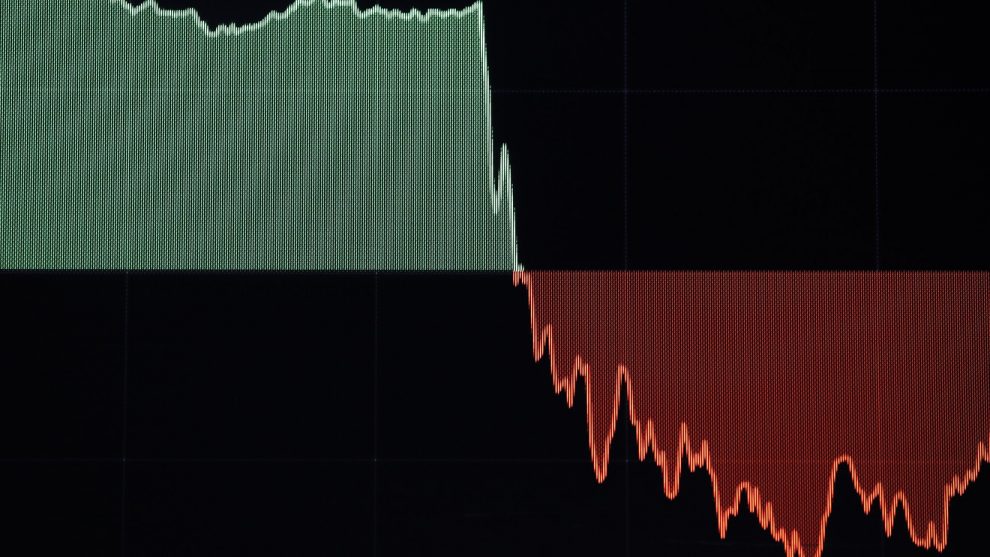
Apparently, there’s nothing like a presidential tweet to reveal the biggest fear that cuts across all financial markets.
In this case, President Donald Trump’s announcement via Twitter on Thursday that he plans to impose a 10% tariff on an additional $300 billion of Chinese goods showed that worries about global growth prospects remain a raw nerve.
“Everyone’s greatest concern has been global growth and trade tensions, and now their worries have materialized,” said Kathy Lien, managing director of FX strategy at BK Asset Management, in a note.
Read: Trump ramps up China trade war as he heads to Ohio rally
Here’s how markets responded:
Stocks
U.S. stocks, which had all but taken back the steep losses suffered a day earlier amid disappointment over prospects for future Federal Reserve rate cuts, quickly dropped back into negative territory. The Dow Jones Industrial Average DJIA, -1.05% ended around 281 points lower, a fall of 1%, marking a nearly 600-point retreat from Thursday’s session high, while the S&P 500 SPX, -0.90% dropped 0.9%.
Read: New Trump tariffs threaten U.S. consumer, spelling wider trouble for stocks, analysts say
Coming after the disappointment in the Fed’s rate-cut message, stocks now face a “double whammy,” said Alec Young, managing director of global markets for FTSE Russell, in a note.
Investors “are being hit on two fronts as rising trade tensions hurt the growth outlook on the one hand, while the Fed simultaneously seems a little less willing to keep cutting rates,” he said. “It all adds up to a murkier macro environment that makes it harder to predict what earnings will look like down the road. That makes increased volatility more likely.”
Crude oil
But it’s the oil market that may offer the best illustration of how the tariff threat stoked growth worries. Oil-market bulls had previously expressed frustration at crude’s inability to put in a meaningful rally amid a sustained drop in U.S. oil inventories and other seemingly bullish developments, including rising tensions in the Middle East — a phenomenon some analysts tied to worries about global demand.
The tariff plans appeared to amplify those concerns. West Texas Intermediate crude for September delivery CLU19, +1.61% on the New York Mercantile Exchange plunged $4.63 a barrel, or 7.9%, to end at $53.95 a barrel — the biggest one-day drop in percentage terms since Feb. 4, 2015.
Mohamed El-Erian, chief economic adviser at Allianz, pointed to the oil meltdown on Twitter:
Treasurys
Meanwhile, Treasurys rallied, sending yields sharply lower across maturities. Yields and debt prices move in opposite directions.
At the short end, yields dropped as investors re-upped expectations for additional Fed rate cuts. Meanwhile, the 10-year Treasury yield fell to 1.894%, its lowest level since Nov. 8, 2016, erasing the so-called Trump bump in yields seen following his presidential election victory.
U.S. dollar and Chinese yuan
When it comes to currencies, the tariff plan did what a Fed rat cut couldn’t. The ICE U.S. Dollar DXY, -0.01% , a measure of the U.S. currency against a basket of six major rivals, turned lower, falling 0.2%, after pushing to a more-than-two-year-high in earlier action Thursday.
But particular attention will be paid to the Chinese yuan, which fell to a 2019 low versus the U.S. dollar in offshore USDCNH, +0.0963% trade. The U.S. dollar rose around 0.7% to trade above 6.95, its strongest since November, following the tariff announcement, according to FactSet, pushing close to the 7.0 yuan level often described as a “line in the sand” for Chinese authorities.
See: Why 7 is the ‘line in the sand’ everyone’s watching when it comes to China’s yuan
“China will have to accelerate stimulus to prevent a bigger slowdown in their economy and as a result, the Chinese yuan could breach the 7-yuan-per-dollar level. This will put pressure on currencies throughout Asia and undermine their growth,” said BK Asset Management’s Lien.
Gold
Gold, a traditional haven, bounced back sharply from post-Fed decision losses after the tariff threat. After settling lower, the precious metal soared in electronic trade to change hands above $1,450 an ounce — a more-than-six-year high.






